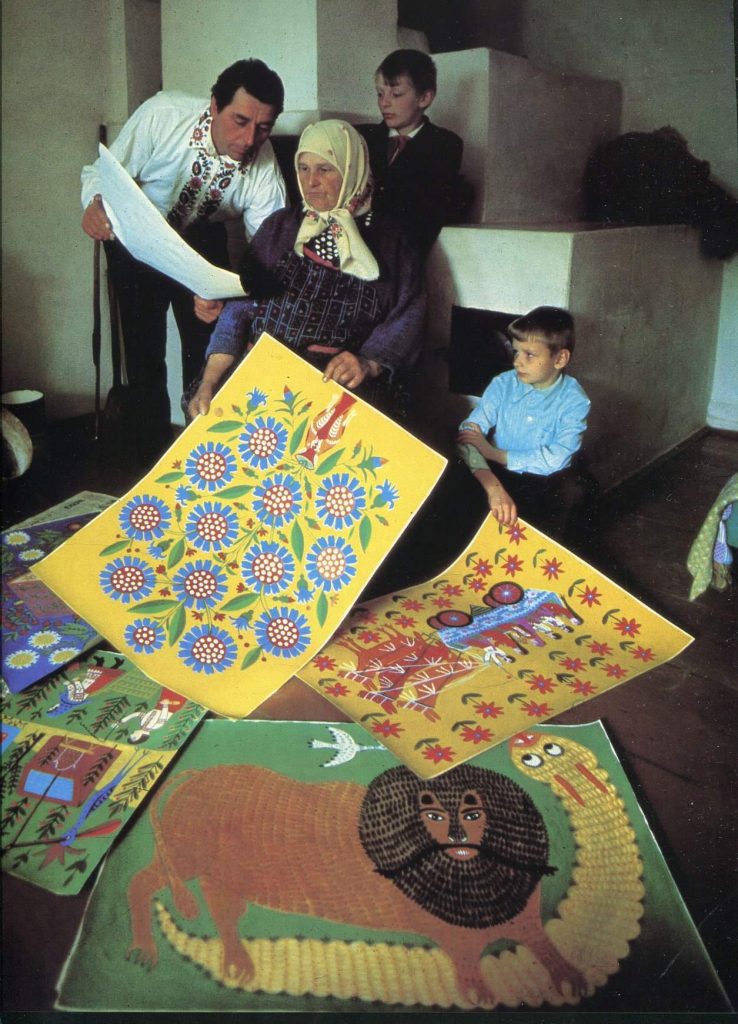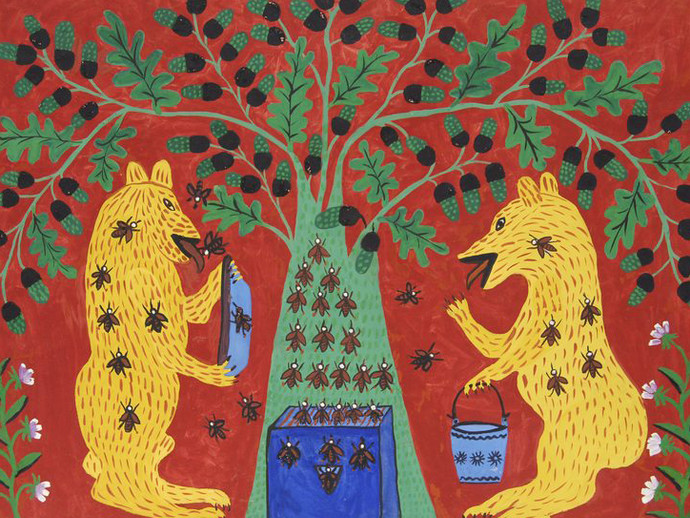Camille Claudel in 5 Sculptures
Camille Claudel was an outstanding 19th-century sculptress, a pupil and assistant to Auguste Rodin, and an artist suffering from mental problems. She...
Valeria Kumekina 24 July 2024
Have you heard of Maria Prymachenko? She was an internationally acclaimed self-taught artist who drew from traditional Ukrainian folk art. What distinguishes her works are bright colors and imaginative ornamental forms, often expressing the struggle between good and evil. Following the Russian invasion of Ukraine, the timeliness of her pacifistic works could not be more powerful. Prymachenko’s exquisite artworks are currently shown in the Saatchi Gallery in London.
Prymachenko was born to a peasant family in 1908 in the Ukrainian village of Bolotnia, 30 km from Chernobyl, where she spent her whole life. Her family taught her a variety of traditional Ukrainian crafts such as embroidery and the traditional way of decorating Easter eggs (Pysanka). Later in life she used traditional Ukrainian patterns and mixed them with her amazing imagination. In 1937 she was awarded a golden medal at the Paris World Fair, where her appearance gathered a lot of attention. Pablo Picasso visiting a Prymachenko exhibition said:
I bow down before the artistic miracle of this brilliant Ukrainian.
The year 2009 was declared the Year of Maria Prymachenko by UNESCO.

Maria Prymachenko with her son Fedir, 1980s. Euromaidanpress.
In her childhood Maria Prymachenko suffered from polio and this painful disease influenced her life. Her relatives reported that she grew to be a thoughtful and considerate person, having compassion for nature and every living thing. The artist herself described the beginning of her artistic call:
Once, as a young girl, I was tending a gaggle of geese. When I got with them to a sandy beach, on the bank of the river, after crossing a field dotted with wild flowers, I began to draw real and imaginary flowers with a stick on the sand… Later, I decided to paint the walls of my house using natural pigments. After that I’ve never stopped drawing and painting.
Rebecca Bengal. “Russian Forces Destroyed the Wild and Beautiful Art of Maria Prymachenko”. Vice, 1 March 2022. Accessed 2 March 2022.
The works of Maria Prymachenko can be subdivided into thematic, symbolic, and ornamental pieces. Her paintings are filled with imaginative details and fantastic creatures, including beautifully plumed birds and other animals which argue, play music, and dine together. She loved colorful, symmetrical depictions of decorative floral arrangements.

Maria Prymachenko, Bears at Apiary, 1965, National Museum of Ukrainian Folk Decorative Art, Kyiv, Ukraine.
An important subject of the artist’s works was the struggle between good and evil. It permeates most of Prymachenko’s works, but good always wins. It is embodied in the images of “kind” beasts and birds (lions, bears, hares, storks, swallows) juxtaposed against evil. Even though we sometimes don’t see a particular painting as a pacifistic work of art, its title gives us no doubt. These anti-war masterpieces and their titles seem to be of particular importance now. Maria Prymachenko lost her husband in World War II; she never remarried.
Prymachenko never accepted money for her paintings, always giving them to friends and neighbors. She died in 1997.
On February 25th, 2022, the Ivankiv Historical and Local History Museum in the town of Ivankiv, north of Kyiv, which housed a collection of Prymachenko, was bombarded by Russian troops who invaded Ukraine on February 24th, 2022. According to local sources, on February 27th the building burned to the ground. Besides the museum, the local music school and the House of Culture were damaged as a result of direct fire from Russian tanks.
Luckily, the museum guard, who lived next to the museum, noticed the fire and ran into the burning building to save anything he was able to carry. Thanks to him, 14 out of 25 works of Maria Prymachenko were saved.
I got out of the cellar and got a call that the museum is on fire. Firefighters cannot leave the station. So I ran across the park, hiding. A machine gunner is ahead, a machine gunner is behind me, and I am running. It was the second day of the war, we still didn’t know how to behave. It was later we realized that you can walk if the jacket is unbuttoned and the hands are free. And you can’t run under any circumstances. But when the museum was on fire, I ran.
On February 28th, ICOM-US issued a statement condemning the destruction of the museum, which “illuminates a tangible and irreversible impact of this immoral and unprovoked war”.
In March 2022, Ukraine’s culture minister called on UNESCO to revoke Russia’s membership but the plea was unsuccessful.
Russian forces burn #museum with paintings of Maria Prymachenko.
A history museum in Ivankiv town, Kyiv Oblast, was destroyed by a Russian attack, according to Ustyna Stefanchuk, an art collector. The museum had about 25 works by famous Ukrainian artist Prymachenkoю pic.twitter.com/sVJD8Eru6h
— Shah Basit (@journoShahBasit) February 28, 2022
In September 2022, the National Center for Business and Cultural Cooperation, Ukrainian House hosted an exhibition of saved Prymachenko works. At the exhibition visitors also had a first look at the project of the Museum’s reconstruction and creation of an art residency named after Maria Prymachenko.
For now, the museum remains completely destroyed but the Ministry of Culture and Information Policy already started a fundraiser to rebuild the Museum of History of Ivankiv District. That gives us hope that Prymachenko’s flowers will bloom again in a peaceful Ukraine.
DailyArt Magazine needs your support. Every contribution, however big or small, is very valuable for our future. Thanks to it, we will be able to sustain and grow the Magazine. Thank you for your help!